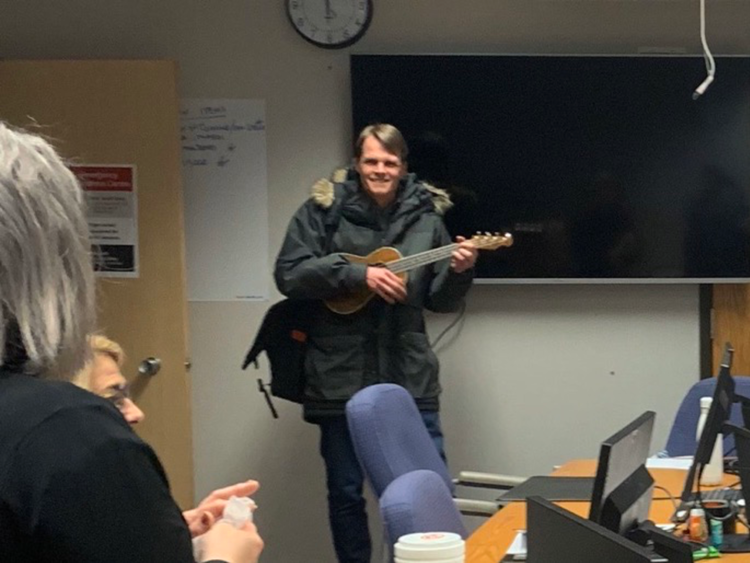By Kate Graham
It’s not often you see a mayoral serenade.
The date was March 20, 2020. Saskatoon Mayor Charlie Clark is standing before his team at the City’s Emergency Operations Centre . . . playing the ukulele, thanking the team for their extraordinary work.

